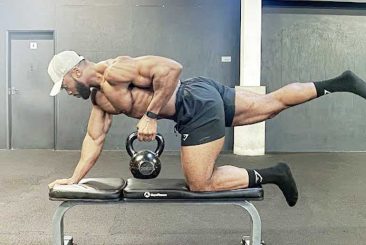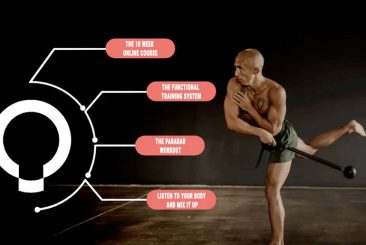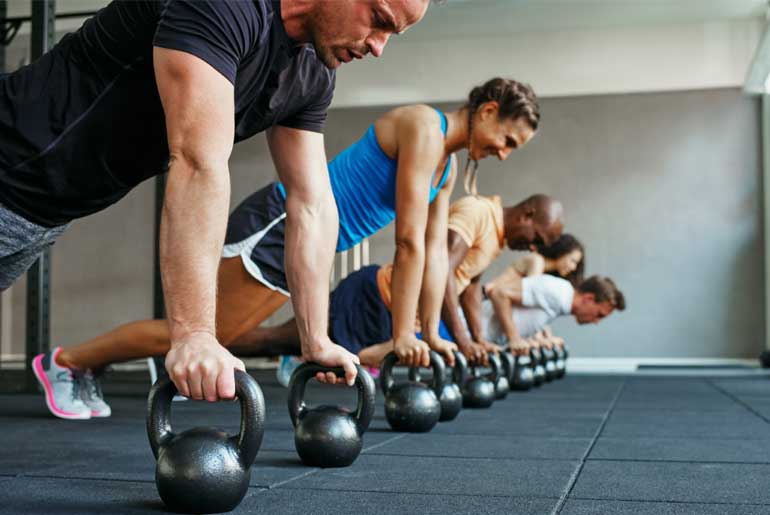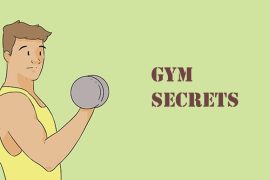In the midst of a plethora of fitness goals, ideologies, and philosophies, embarking on or sustaining a fitness journey can be overwhelming. However, this article simplifies the process by advocating a practical strategy focused on optimizing results. By introducing functional training as a core element of your routine, you can efficiently maximize your time and effort. This approach prioritizes practical, real-life movements and exercises, helping you achieve a well-rounded and versatile fitness level that translates into various aspects of your daily life.
Understanding the Essence of Functional Training:
Functional training is a type of exercise that emphasizes movements and exercises that closely mimic real-life activities and challenges. The primary goal of functional training is to improve your ability to perform everyday tasks and movements more effectively and efficiently. This approach focuses on training your body to move in ways that are relevant to your daily life, work, or recreational activities.

Unlike traditional gym exercises that often isolate specific muscle groups, functional training involves dynamic, multi-joint movements that engage multiple muscle groups and require coordination and balance. These movements are designed to replicate natural human movements, such as pushing, pulling, squatting, lifting, rotating, and reaching. Functional training can involve bodyweight exercises, resistance training with various tools (like dumbbells, kettlebells, medicine balls, resistance bands), stability balls, balance boards, and more.
When to Integrate Functional Training into Your Fitness Routine:
Implementing functional training after establishing a solid strength base is a common and effective approach. This strategy ensures that your body has developed a foundational level of strength and muscle mass, which provides a stable platform for incorporating more dynamic and complex functional movements.

The progression you’ve described, where professional athletes first focus on building strength through traditional compound movements during the off-season and then transition to functional and sport-specific movements, is a well-established practice.
Here’s a breakdown of the approach you mentioned:
- Base Building Phase (2-3 Months): During this phase, the emphasis is on building general strength and muscle mass. Athletes and fitness enthusiasts focus on compound movements like squats, deadlifts, bench presses, and other foundational exercises. The goal is to lay a solid foundation of strength and muscle before moving on to more dynamic exercises.
- Transition to Functional Training: After the base building phase, functional training is introduced gradually. This might involve incorporating exercises that focus on balance, stability, multi-planar movements, and core engagement. These exercises help fine-tune skills that are more directly applicable to the demands of the sport or daily activities.
- Sport-Specific Training: As athletes move closer to their competitive season or individuals align with their specific goals, they can integrate sport-specific movements and drills. These activities closely mimic the movements and demands of the sport, helping athletes get into “game shape” and optimize their performance.
This approach ensures that the body is adequately prepared to handle the demands of functional and sport-specific movements without compromising overall strength and stability. It’s important to note that this progression can vary based on individual goals, fitness levels, and the specific sport or activity.
Essential Practical and Functional Patterns for Optimal Fitness:
A well-rounded training program should encompass specific movement patterns such as pushing, pulling, carrying, hip hinging, and knee-dominant movements. To enhance the transfer of strength gains to major compound movements like the bench press, squat, and deadlift, it’s beneficial to include power-oriented exercises like kettlebell swings, Olympic lifts, and medicine ball throws before strength training sessions. Additionally, don’t underestimate the significance of adding frontal plane movements for balanced muscle engagement and stability. Agility ladder drills and frontal plane mini-band steps are practical ways to achieve this, particularly as warm-up routines before leg-focused strength training sessions or when dealing with knee tendonitis.

Embracing these principles of functional training can indeed revolutionize your fitness routine, offering variety while preparing your body to excel in various dimensions of daily life.
Here are some key reasons why functional training is important:
- Improved Real-Life Performance: Functional training helps you develop strength, coordination, balance, and flexibility in ways that directly translate to your daily activities. Whether you’re picking up groceries, playing with your kids, or even participating in sports, functional exercises prepare your body for the demands of everyday life.
- Enhanced Functional Strength: Traditional weightlifting often focuses on isolated muscle groups, whereas functional training emphasizes compound movements that engage multiple muscle groups simultaneously. This approach enhances your functional strength, which is the ability to generate force through various movements rather than just lifting heavy weights in a controlled environment.
- Prevention of Injuries: By targeting movement patterns and imbalances, functional training can help identify and address weaknesses or limitations in your body. This, in turn, can reduce the risk of injuries both during physical activities and in your daily routines.
- Core Stabilization: Many functional exercises require the activation of your core muscles to stabilize your body during dynamic movements. This helps improve your core strength, stability, and posture, which are crucial for maintaining a healthy spine and reducing the risk of back pain.
- Time Efficiency: Functional training often involves multi-joint movements and full-body engagement, allowing you to work multiple muscle groups simultaneously. This can lead to more efficient workouts that burn calories and improve fitness in less time compared to traditional isolated exercises.
- Variety and Engagement: Functional training offers a wide variety of exercises that can keep your workouts interesting and engaging. This variety helps prevent boredom and plateaus, as you can continuously challenge your body with new movement patterns and exercises.
- Adaptability: Functional training can be customized to suit people of all fitness levels and ages. Whether you’re a beginner or an experienced athlete, exercises can be modified to match your current capabilities while gradually increasing the intensity.
- Sport-Specific Performance: For athletes, functional training can be tailored to mimic the movements and demands of their specific sport. This can lead to improved sports performance by enhancing agility, power, and coordination in a way that directly transfers to the playing field.
- Overall Fitness: Functional training promotes a well-rounded approach to fitness by combining strength, flexibility, balance, and cardiovascular conditioning. This holistic approach supports not only physical health but also mental well-being.
Incorporating functional training into your fitness routine can provide numerous benefits beyond traditional exercise methods. However, it’s important to ensure that your functional training program is well-designed, balanced, and aligned with your goals and physical condition. Consulting with a fitness professional or personal trainer can help you create a safe and effective functional training regimen tailored to your individual needs.
Disclaimer:
The information contained in this article is for educational and informational purposes only and is not intended as a health advice. We would ask you to consult a qualified professional or medical expert to gain additional knowledge before you choose to consume any product or perform any exercise.








